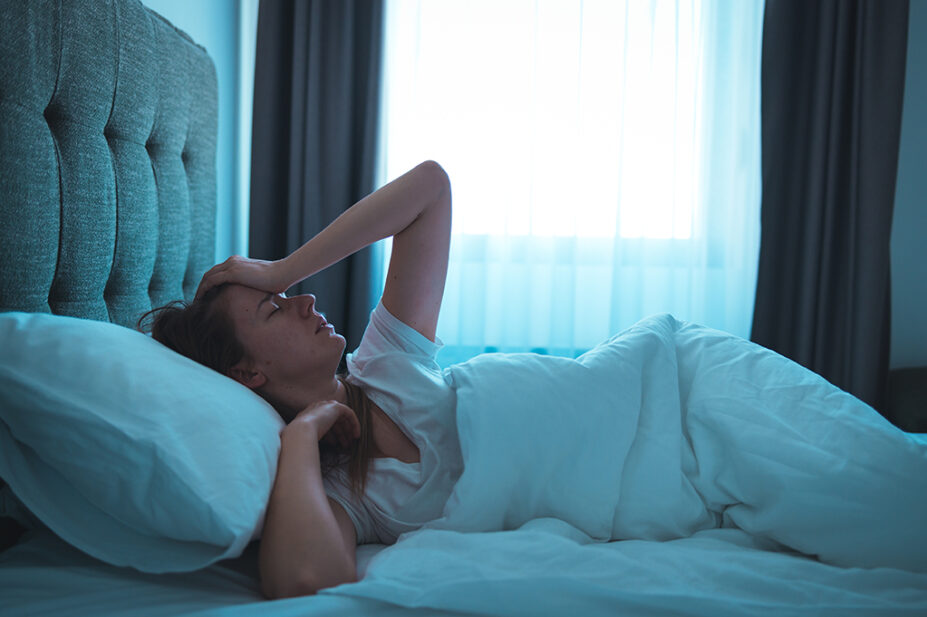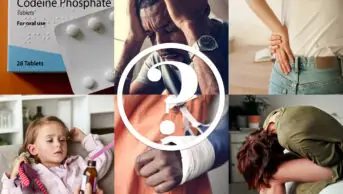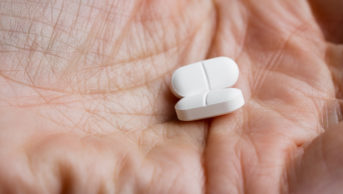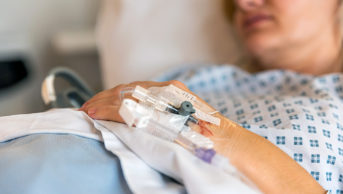
Shutterstock.com
Triptans, a class of 5HT1 receptor agonists, are more effective for treatment of acute migraines than newer and more expensive agents, such as lasmiditan, rimegepant and ubrogepant, results from a meta-analysis have suggested.
The study, published in The BMJ on 18 September 2024, compared 17 treatment options for migraine episodes in adults that are administered as oral monotherapy.
These included antipyretics (paracetamol), ditans (lasmiditan); gepants (rimegepant and ubrogepant); non-steroidal anti-inflammatory drugs (NSAIDs, such as acetylsalicylic acid, celecoxib, diclofenac potassium, ibuprofen, naproxen sodium and phenazone); and triptans (such as almotriptan, eletriptan, frovatriptan, naratriptan, rizatriptan, sumatriptan and zolmitriptan).
The analysis collected data from 89,445 participants across 137 randomised controlled trials.
Primary outcomes of the study were measured as the proportion of participants who were pain-free at 2 hours post-dose, and the proportion of participants with sustained pain freedom from 2–24 hours post-dose, “both without the use of rescue drugs”.
From head-to-head comparisons between active interventions, eletriptan was the most effective drug for pain freedom at 2 hours (odds ratio [OR]: 1.46 to 3.01), followed by rizatriptan (OR: 1.59 to 2.44), sumatriptan (OR: 1.35 to 2.04) and zolmitriptan (OR: 1.47 to 1.96) — all of which are triptans.
For sustained pain freedom up to 24 hours, the most effective agents were eletriptan (ORs: 1.41 to 2.73) and ibuprofen (OR: 3.16 to 4.82).
Researchers also investigated the tolerability of each treatment option by assessing the proportion of participants who experienced at least one serious adverse event and the proportion with at least one of 19 pre-defined specific clinically relevant adverse events.
Tolerability was determined by specific adverse events of chest pain or discomfort, dizziness, fatigue, nausea, paraesthesia and sedation.
Among triptans, dizziness was more commonly associated with lasmiditan, eletriptan, sumatriptan and zolmitriptan (OR: 1.14 to 3.19).
Fatigue and sedation occurred more frequently with eletriptan (OR: 1.34 to 2.63) and lasmiditan (OR: 1.33 to 2.50), while paraesthesia was more often associated with lasmiditan (OR: 1.28 to 1.50), sumatriptan (OR vs. placebo 1.18 (95% CI 1.04 to 1.32)), and zolmitriptan (OR: 1.18 to 1.50).
Authors highlighted that despite the low acquisition cost, balanced efficacy and tolerability profiles of triptans, they are underused among people with migraines, with current use of triptans in Europe ranging from 3.4–22.5%.
Commenting on the study, Eloisa Rubio-Beltran, Migraine Trust Research Fellow at King’s College London, said: “This work was highly needed, it will not only have an impact in future studies but also, in migraine treatment guidelines and policymaking.
“As the study highlights, due to their high efficacy and low cost, triptans should be the first-line treatment option for the acute treatment of migraine, and while that is already the case in several countries, with sumatriptan being part of the List of Essential Medicines of the World Health Organization, not all patients have access to them.
“These results should inform treatment guidelines and support the inclusion of the best performing triptans into the List of Essential Medicines, to optimise treatment, allowing patients to access more efficacious options,” she said.
Peter Goadsby, director of the National Institute for Health Research Clinical Research Facility and professor of neurology at King’s College London, commented: “This is good-quality research with the main take-home message being triptans are under-utilised for migraine, being supported by the data here that [are] in keeping with other existing evidence.
However, he warned: “As highlighted by the authors, there are some limitations of the work. First, there is a lot of heterogeneity of the trials they look at, which can mean there is ‘low or very low’ confidence in some comparisons between drugs
“Secondly, the work is based on average treatment effects, so this is still unable to offer insights at an individual patient level.
“Finally, clinical trial results do not integrate efficacy, side effects and consistency, which together impact the patient outcomes in the medium and long term,” he added.
In the UK, it was estimated that there were 33,000 hospital admissions for migraine in 2021/2022, with an economic cost of £4.4bn in lost work days.
In September 2023, the National Institute for Health and Care Excellence recommended rimegepant as the “first and only” treatment for acute migraine for adults who are not able to take triptans and have tried NSAIDs.


